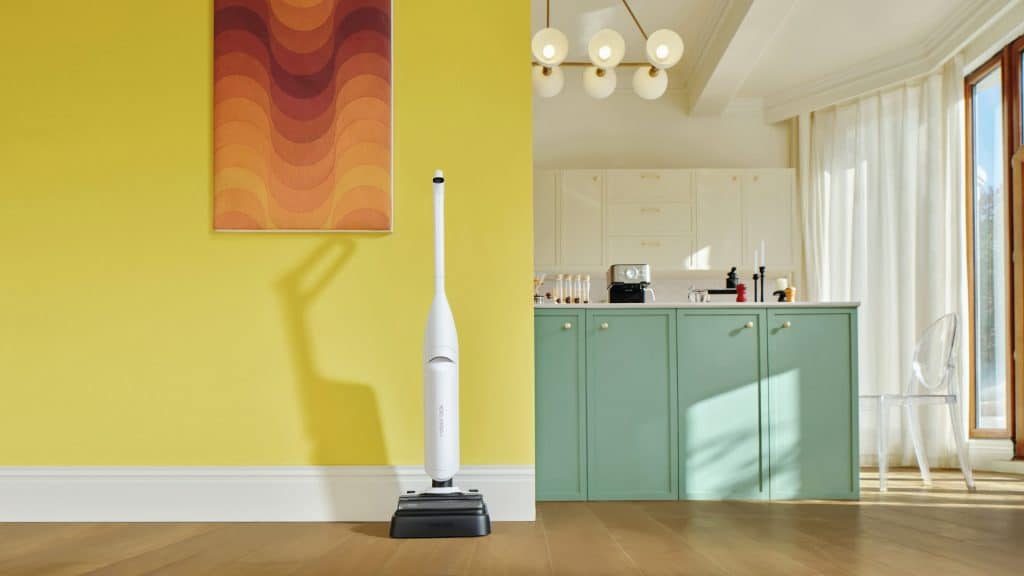In 2025, home productivity is evolving faster than ever. With innovations in artificial intelligence (AI), the Internet of Things (IoT), and automation, smart tools are helping people manage their daily routines, work from home efficiently, and create a more comfortable and organized living environment. Smart tools for home productivity are no longer just convenient gadgets—they are becoming essential for anyone who wants to optimize their time and maintain balance between work, home, and personal life.

The Rise of AI-Powered Home Assistants
Artificial intelligence has become central to home productivity. Modern AI-powered assistants are not just limited to controlling lights or setting reminders—they now provide personalized support in managing household tasks, scheduling, and even maintaining mental wellness. For example, tech companies are developing advanced home robots and intelligent hubs designed to integrate seamlessly with other smart devices, offering real-time assistance and proactive task management.
These AI-powered systems can:
- Schedule daily routines automatically based on your habits.
- Manage connected devices like thermostats, lights, and security cameras.
- Provide reminders for work tasks, household chores, and appointments.
- Offer predictive assistance, such as suggesting the best times for focused work or relaxation.
AI assistants are helping homeowners save time and mental energy by anticipating needs rather than simply responding to commands. This shift toward proactive assistance marks a major advancement in smart home productivity.
Smart Home Devices Enhancing Daily Tasks
Smart devices have become a cornerstone of home productivity. Modern devices combine convenience, efficiency, and automation to reduce the time spent on routine tasks. For example, robotic vacuum cleaners and mopping systems now feature edge-detection technology that cleans areas more thoroughly without human supervision. These devices allow homeowners to focus on more pressing responsibilities while keeping their homes spotless.
Other examples of smart devices that enhance daily productivity include:
- Smart Thermostats: Automatically adjust temperature based on time of day or occupancy, helping to conserve energy and maintain comfort.
- Smart Lighting Systems: Schedule lights to match your routines, improving focus during work hours and promoting relaxation in the evening.
- Voice-Controlled Smart Speakers: Manage connected devices hands-free, making multitasking easier.
- Automated Home Security: AI-powered cameras and smart locks provide peace of mind, allowing homeowners to concentrate on tasks knowing their home is safe.
Integrating these devices into a single ecosystem creates a more fluid, responsive living environment that significantly boosts productivity.
AI-Driven Productivity Tools for Remote Work
With remote and hybrid work becoming a long-term trend, AI-driven tools designed specifically for home productivity have become essential. These tools streamline communication, automate repetitive tasks, and optimize scheduling, making remote work more efficient.
Some ways AI tools enhance productivity include:
- Task Automation: Automate repetitive workflows, such as file organization, email sorting, or report generation.
- Smart Scheduling: AI tools can analyze calendars and suggest optimal meeting times for multiple participants.
- Project Management Assistance: Intelligent platforms help prioritize tasks, track deadlines, and improve team collaboration.
- Focus Enhancement: AI-powered apps provide personalized suggestions for concentration techniques and break schedules.
These AI-driven productivity tools reduce the cognitive load of managing both personal and professional responsibilities, allowing homeowners to maximize their time effectively.
Emerging Trends in Smart Home Productivity
Several trends are shaping the future of home productivity tools, making them more integrated, sustainable, and user-friendly:
1. Convergence of AI and IoT
The combination of AI and IoT is creating smarter, more connected homes. Devices can now communicate with each other to optimize daily routines. For example, a smart thermostat may adjust based on your calendar, while lighting and music systems change automatically to create the ideal work environment. This level of integration simplifies life and increases productivity by reducing the need for manual adjustments.
2. Sustainable Smart Devices
Sustainability is becoming a priority in smart home technology. Eco-friendly devices are being designed with recycled materials and energy-efficient performance. From energy-saving thermostats to low-power smart lighting, these products not only reduce environmental impact but also support long-term productivity by lowering utility costs and maintenance needs.
3. Advanced Home Security Systems
Home security has evolved from basic alarms to AI-powered monitoring systems. Modern systems feature facial recognition, automated alerts, and voice command integration. Secure and well-monitored homes create a safer environment, allowing residents to focus on work and daily tasks without worrying about safety concerns.
4. Personalized AI Recommendations
One of the most exciting trends in smart home productivity is the ability of AI to provide personalized recommendations. By analyzing user behavior, AI can suggest optimal schedules, prioritize tasks, and even recommend wellness breaks or energy-saving measures. This proactive guidance makes homes more adaptive to individual needs, enhancing productivity without additional effort.
Practical Tips for Optimizing Home Productivity with Smart Tools
To get the most out of smart tools for home productivity, consider these strategies:
- Create a Connected Ecosystem: Choose devices that can integrate seamlessly with each other for automation and efficiency.
- Automate Repetitive Tasks: Use smart assistants and AI tools to handle routine chores, scheduling, and reminders.
- Optimize Workspaces: Combine smart lighting, temperature control, and noise management to create a productive environment.
- Set Up AI-Powered Alerts: Utilize AI notifications for important tasks, meetings, and security events.
- Prioritize Sustainability: Opt for energy-efficient devices to reduce utility costs and environmental impact while maintaining productivity.
By implementing these practical tips, homeowners can maximize the benefits of smart technology while simplifying daily routines.
Conclusion
Smart tools for home productivity are transforming how we live and work. From AI-powered assistants and connected IoT devices to automated cleaning systems and intelligent scheduling platforms, these technologies enable homeowners to manage tasks efficiently, save time, and maintain a secure, comfortable environment. As the convergence of AI, IoT, and automation continues to advance, smart tools for home productivity will play an increasingly vital role in modern living. Adopting these innovations allows individuals to focus on meaningful work, family, and personal well-being, making every day more organized and efficient.
References
- The Verge. (2025). Apple’s big AI home push: Upgraded Siri, Pixar-like robot, smart display, and more. Available at: https://www.theverge.com (Accessed: 18 August 2025).
- Zapier. (2025). Best AI productivity tools for home and work. Available at: https://zapier.com (Accessed: 18 August 2025).
- Popular Mechanics. (2025). Top smart home deals and devices for productivity in 2025. Available at: https://www.popularmechanics.com (Accessed: 18 August 2025).









